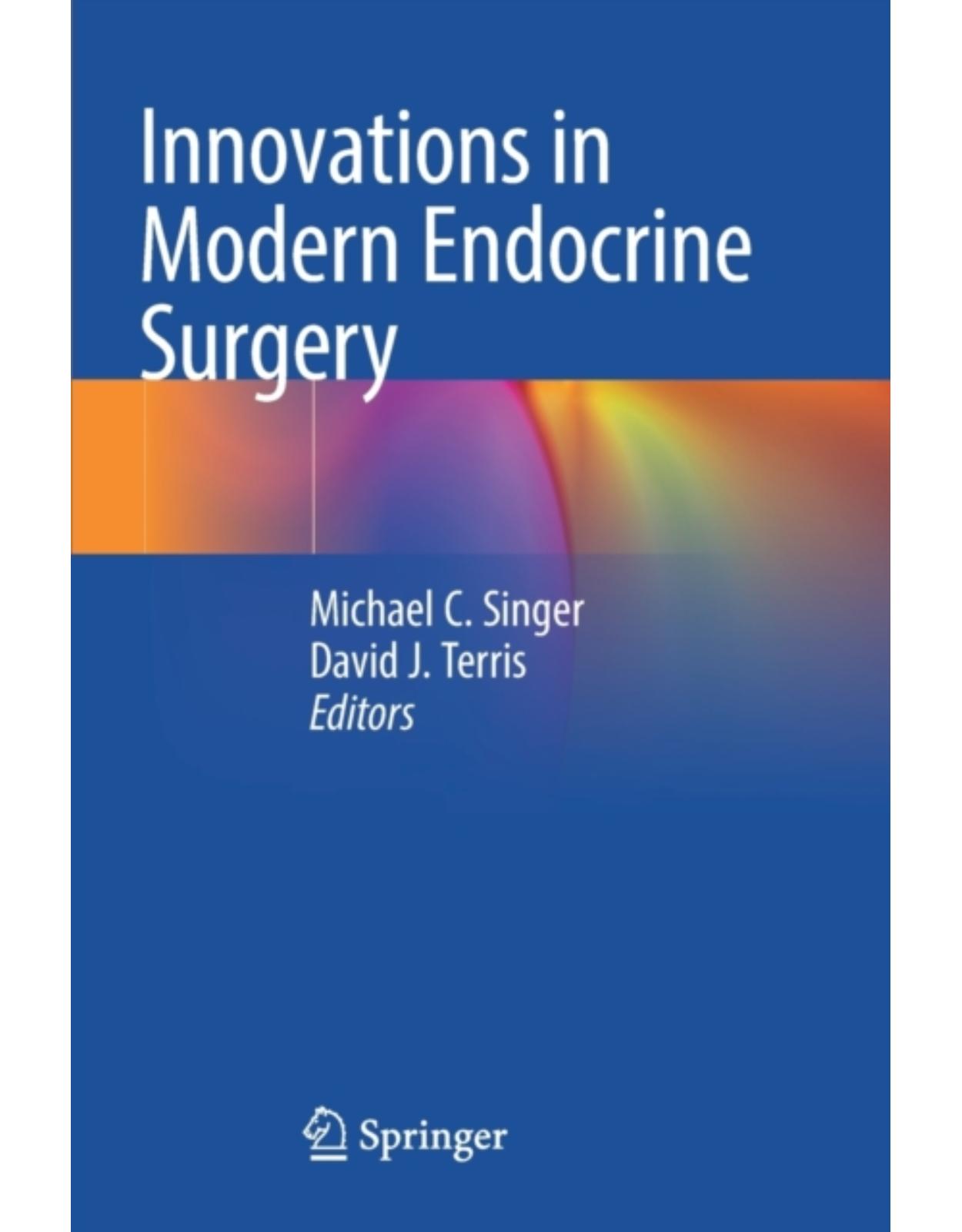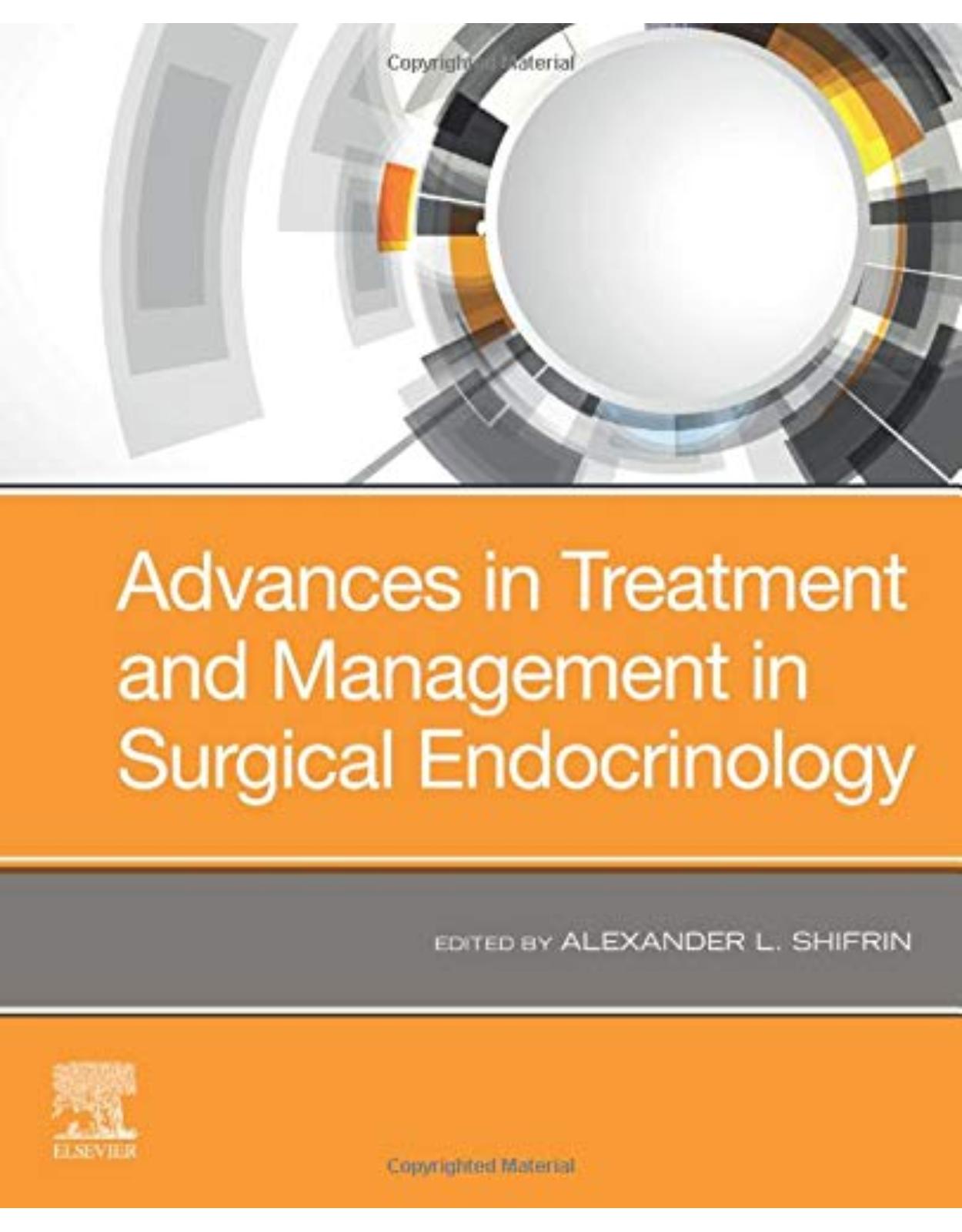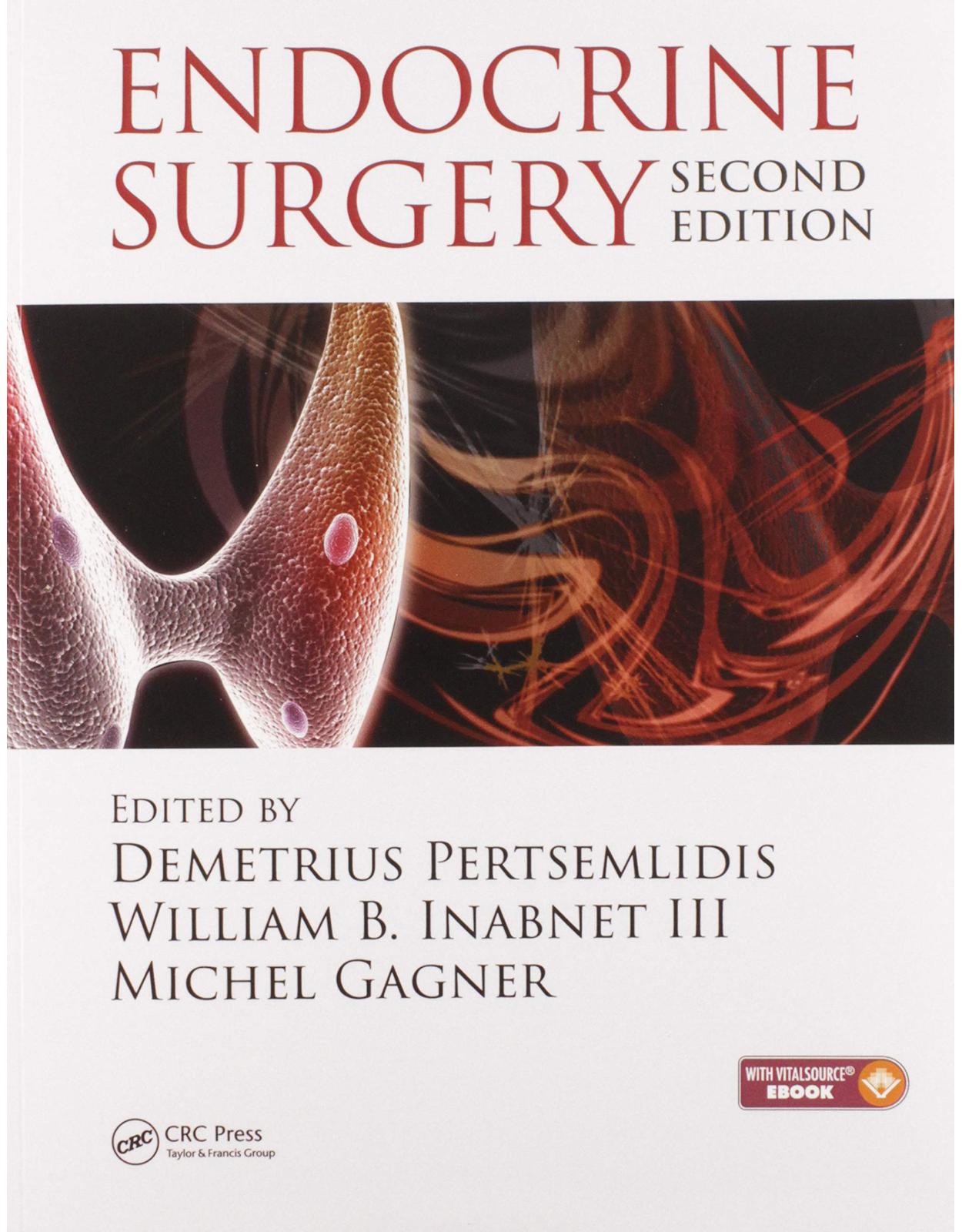
Endocrine and Neuroendocrine Surgery
Livrare gratis la comenzi peste 500 RON. Pentru celelalte comenzi livrarea este 20 RON.
Disponibilitate: La comanda in aproximativ 4 saptamani
Autor: James R. Howe
Editura: Springer
Limba: Engleza
Nr. pagini: 344
Coperta: Paperback
Dimensiuni: 210 x 279 mm
An aparitie: 15 Aug 2018
Description:
This book brings together recognized experts in the field to describe their current techniques for the surgical treatment of diseased thyroid, parathyroid, and adrenal glands, as well as neuroendocrine tumors of small bowel, pancreas, liver, and skin. For each procedure, indications, operative steps, potential pitfalls and complications, and postoperative management are presented. The clear descriptions coupled with informative and beautiful illustrations will give the reader new perspectives and insights into the anatomy and conduct of these procedures. Endocrine surgery has been an area of special interest to surgeons for well over a century, while the increasing incidence of neuroendocrine tumors has more recently led to greater attention to these neoplasms. Significant advances have been made in a variety of areas, the most recent being the introduction of minimally invasive methods of removing diseased glands, and the improved understanding of the natural history of neuroendocrine tumors.
Table of Contents:
Preface
Acknowledgments
Contents
Contributors
Part I: Parathyroid
1: Radioguided Parathyroidectomy
1.1 Introduction
1.2 Technique
1.3 Discussion
1.3.1 Sestamibi-Negative Patients
1.3.2 Ectopic Glands
1.3.3 Familial Primary Hyperparathyroidism
1.3.4 Secondary and Tertiary Hyperparathyroidism
1.3.5 Pediatric Patients
1.3.6 Reoperative Surgery
1.4 Summary
Suggested Reading
2: Minimally Invasive Parathyroidectomy with Intraoperative PTH Testing
2.1 Introduction
2.2 Technique
2.2.1 Preoperative Imaging
2.2.2 Surgical Procedures
2.2.3 Measurement of PTH Levels
2.2.4 Closure and Postoperative Care
2.3 Discussion
2.3.1 Complex Findings on Preoperative Imaging
2.3.2 Failure of IOPTH to Fall Appropriately
2.3.3 Other Methods of MIP
References
3: Subtotal Parathyroidectomy for Parathyroid Hyperplasia
3.1 Introduction
3.2 Techniques of Subtotal Parathyroidectomy
3.2.1 Positioning of the Patient and Skin Incision
3.2.2 Normal Parathyroid Anatomy
3.2.3 Fascial Layers
3.2.4 Exposure of Parathyroid Glands
3.2.5 Superior Glands
3.2.6 Inferior Glands
3.2.7 Supernumerary Glands
3.2.8 Subtotal Parathyroidectomy: Resection and Verification
3.3 Results and Conclusions
References
4: Parathyroid Transplantation
4.1 Introduction
4.2 Surgical Technique
4.3 Results and Conclusions
References
5: Mediastinal/Thoracoscopic Parathyroidectomy
5.1 Introduction
5.2 Preoperative Workup and Imaging
5.3 Intraoperative Localization and PTH Monitoring
5.4 Mediastinal Anatomy
5.5 Parathyroidectomy Using Video-�Assisted Thoracoscopic Surgery (VATS)
5.6 Anterior Mediastinotomy (Chamberlain Procedure)
5.7 Complications
References
Part II: Thyroid
6: Thyroid Lobectomy and Total Thyroidectomy
6.1 Indications for Surgery
6.2 Preoperative Work-Up
6.3 Preoperative Discussion and Consultation
6.4 Anesthesia
6.5 Position of the Patient and the Incision
6.6 Surgical Procedure
6.7 Wound Closure
6.8 Intraoperative Decisions
6.9 Postoperative Management
References
7: Central Neck Dissection for Medullary Thyroid Carcinoma
7.1 Introduction
7.2 Preoperative Workup
7.3 Surgical Procedure
7.3.1 Positioning and Incision
7.3.2 Initial Dissection
7.3.3 Thyroidectomy and Tumor Specimen Mobilization
7.3.4 Contralateral Thyroidectomy and Node Dissection
7.3.5 Parathyroid Autotransplantation
7.3.6 Drains and Closure
7.4 Complications
7.5 Results and Conclusions
References
8: Substernal Goiter
8.1 Introduction
8.2 Operative Technique
8.2.1 Cervical Approach
8.2.2 Mediastinal Extension
8.3 Complications of Substernal Goiter Surgery
References
9: Modified Neck Dissection for Differentiated Thyroid Cancer
9.1 Introduction
9.2 Modified Neck Dissection for Lateral Cervical Lymphadenectomy
9.2.1 Incision Planning
9.2.2 Raising Skin Flaps
9.2.3 Selective Neck Dissection of Levels IIa, III, IV, and Vb
9.2.4 Comprehensive Neck Dissection of Levels I Through V
9.3 Discussion
9.4 Conclusions
References
Part III: Adrenal
10: Open Transabdominal Adrenalectomy for Malignant Neoplasms
10.1 Introduction
10.2 Surgical Technique
10.3 Results and Conclusions
References
11: Posterior Adrenalectomy
11.1 Introduction
11.2 Needs and Indications
11.3 Surgical Technique
11.4 Results and Conclusions
References
12: Laparoscopic Transabdominal Lateral Adrenalectomy
12.1 Introduction
12.2 Surgical Technique
12.2.1 Laparoscopic Right Adrenalectomy
12.2.2 Laparoscopic Left Adrenalectomy
12.3 Postoperative Management
12.4 Complications
References
13: Posterior Retroperitoneoscopic Adrenalectomy
13.1 Introduction
13.2 Surgical Technique
13.2.1 Patient Positioning and Trocar Placement
13.2.2 Creation of Working Space and Identification of Critical Landmarks
13.2.3 Adrenal Gland Dissection: Operative Strategy
13.2.4 Identification and Division of the Adrenal Vein
13.3 Robot-Assisted Retroperitoneoscopic Adrenalectomy (RAPRA)
13.4 Results and Conclusions
References
Part IV: Stomach and Duodenum
14: Surgery for Duodenal and Gastric Neuroendocrine Tumors
14.1 Duodenal Neuroendocrine Tumors
14.1.1 Introduction
14.1.2 Surgery
14.2 Gastric Neuroendocrine Tumors (Carcinoid Tumors)
14.2.1 Introduction
14.2.2 Treatment and Surgery
14.2.2.1 Surveillance and Local Resection
14.2.2.2 Operative Technique for Subtotal or Total Gastrectomy with D2 Lymph Node Dissection
Suggested Reading
Part V: Pancreas
15: Pancreaticoduodenectomy for Neuroendocrine Tumors
15.1 Introduction
15.2 Surgical Technique
15.2.1 Step 1: Exposure of the Infrapancreatic Superior Mesenteric Vein (SMV)
15.2.2 Step 2: Extended Kocher Maneuver
15.2.3 Step 3: Dissection of the Porta Hepatis, Hepatic Artery Exposure, Cholecystectomy, and Bi
15.2.4 Step 4: Transection of the Gastric Antrum (or the Duodenum, if Pylorus Preservation Is Pl
15.2.5 Step 5: Transection of the Jejunum
15.2.6 Step 6: Transection of the Pancreas and Completion of the Retroperitoneal Dissection
15.2.7 Step 7: Vascular Resection and Reconstruction
15.2.8 Step 8: SMV Reconstruction When Tumor Involvement Is Limited to the SMV
15.2.9 Step 9: Pancreatic Reconstruction
15.2.10 Step 10: Biliary Reconstruction
15.2.11 Step 11: Gastric or Duodenal Reconstruction
15.3 Results and Conclusions
References
16: Open Distal Pancreatectomy
16.1 Introduction
16.2 Procedure
16.2.1 Step 1: Incision
16.2.2 Step 2: Isolation of the Splenic Artery and Identification of the Portal Vein
16.2.3 Step 3: Exposure of the Lesser Sac and Division of the Short Gastric Vascular Arcade
16.2.4 Step 4: Dropping the Splenic Flexure of the Colon
16.2.5 Step 5: Dissection of the Pancreatic Body and Exposure of the Superior Mesenteric Vein
16.2.6 Step 6: Developing the Portal Vein Canal and Portosplenic Confluence.
16.2.7 Step 7: Transection of the Pancreatic Neck and Ligation of the Vasculature
16.2.8 Step 8: Retrograde Removal of the Distal Pancreas and Spleen
16.2.9 Step 9: Final Considerations
16.2.10 Technical Variations
16.3 Discussion
References
17: Laparoscopic Distal Pancreatectomy
17.1 Introduction
17.2 Laparoscopic Distal Pancreatectomy with Splenectomy
17.2.1 Patient Positioning and Port Placement
17.2.2 Dissection of Peripancreatic Structures
17.2.3 Division of the Pancreas and Vascular Structures
17.3 Laparoscopic Distal Pancreatectomy with Splenic Preservation
17.4 Hand-Assisted Laparoscopic Distal Pancreatectomy
17.5 Pearls and Pitfalls
17.6 Results and Conclusions
References
18: Pancreatic Enucleation
18.1 Introduction
18.2 Indications
18.3 Diagnostic Imaging
18.4 Patient Preparation
18.5 Operative Technique
18.5.1 Open Pancreatic Enucleation
18.5.1.1 Exposure of the Pancreas (Body and Tail)
18.5.1.2 Exposure of the Pancreas (Head and Uncinate)
18.5.1.3 Mobilization of the Pancreas
18.5.1.4 Bimanual Palpation and Ultrasound
18.5.1.5 Enucleation of Pancreatic Tumor
18.5.2 Laparoscopic Pancreatic Enucleation
18.5.2.1 Positioning and Port Placement
18.5.2.2 Exposure and Mobilization of the Pancreas
18.5.2.3 Enucleation
18.6 Results
18.7 Conclusions
References
Part VI: Other Neuroendocrine
19: Small Bowel Resection and Lymphadenectomy for Jejunoileal Neuroendocrine Tumors
19.1 Introduction
19.2 Operative Technique
19.2.1 Approach
19.2.2 Exploring the Abdomen
19.2.3 Small Bowel Resection and Lymphadenectomy
19.2.4 Special Considerations for Lymphadenectomy
19.2.5 Other Considerations
19.3 Complications
19.4 Results
References
20: Liver Surgery for Neuroendocrine Tumors
20.1 Introduction
20.2 Radiofrequency Ablation and Microwave Ablation
20.3 Irreversible Electroporation
20.4 Tumor Enucleation
20.5 Segmental and Lobar Resections
20.6 Central Hepatectomy: Surgical Technique
20.7 Discussion
References
21: Wide Excision and Sentinel Node Mapping for Merkel Cell Carcinoma
21.1 Introduction
21.2 Operative Details
21.2.1 Wide Local Excision
21.2.2 Local Flaps
21.2.3 Sentinel Lymph Node Biopsy
21.3 Results and Follow-Up
References
| An aparitie | 15 Aug 2018 |
| Autor | James R. Howe |
| Dimensiuni | 210 x 279 mm |
| Editura | Springer |
| Format | Paperback |
| ISBN | 9783662571781 |
| Limba | Engleza |
| Nr pag | 344 |













Clientii ebookshop.ro nu au adaugat inca opinii pentru acest produs. Fii primul care adauga o parere, folosind formularul de mai jos.